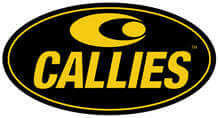
MS Access As A Dev Tool
Access continues to be a highly efficient tool for business database development.
Don't let a broken database ruin your business. We repair broken databases, program
custom Microsoft Access databases, convert Excel to Access, and upgrade old Access
databases to the latest version. Call (323) 285-0939 now for a FREE consultation.
The Best Microsoft Access Database Solutions owner, consultant, and principal programmer is Alison Balter - a recognized expert Microsoft Access consultant. Alison is the author of 15 Microsoft Access training books and videos. She is a frequent guest speaker at MS Access conferences and has developed hundreds of applications for businesses of all types.
We know your business data is important; we listen to your concerns, ask questions, and gather information from all stake holders. We discuss your needs and requirements for your database. We find out what you want, why you need various features so we can obtain as much information as possible. Once we have the information we need, we work with you to design the proper database architecture, plus the dashboards, the questions (queries), forms, and reports you need for an excellent database system.

We also create websites designed for speed to display your data accurately, using ASP.NET technology. Fast, secure, and robust, our ASP.NET web sites and web applications give you true business tool for finding and displaying information dynamically on the web.






Access continues to be a highly efficient tool for business database development.

How to create a Microsoft Access application with some unique tips and tricks.

Your Access developer near me has some great info for you about using Access efficiently.
Call MS Access Solutions at (323) 285-0939 for your FREE consultation.
The material below originally appeared in Alison Balter's book Mastering Microsoft Office Access 2007 Development and is reprinted here with the author's permission. There may be references to "Figures" that are not reprintable and are not used on this page
After you have added a subform, you need to understand how to work with it. To begin, familiarize yourself with a few properties of a Subform control:
You should also understand how to make changes to the subform. One option is to open the subform in a separate window (as you would open any other form). After you close and save the form, all the changes automatically appear in the parent form. The other choice is to modify the subform from within the main form. With the main form open, the subform is visible. Any changes made to the design of the subform from within the main form are permanent.
The default view of the subform is Datasheet or Continuous Forms, depending on how you added the subform and what options you selected. If you want to modify the default view, simply change the subform's Default View property.
When the subform is displayed in Datasheet view, the order of the fields in the subform has no bearing on the datasheet that appears in the main form. The order of the columns in the datasheet depends on the tab order of the fields in the subform. You must therefore modify the tab order of the fields in the subform to change the order of the fields in the resulting datasheet.
Access 2003 made it easier to work with subforms and subreports in Design view. Scrolling was improved so that it's easier to design subforms and subreports. In addition, you can open subforms in their own separate Design view window by right-clicking the subform and selecting Subform in New Window. Alternatively, instead of rightclicking the subform, you can select the subform and then click to select Subform in New Window from the Tools group on the Design tab of the ribbon.
One strategy when building forms is to base them on queries; by doing this, you generally get optimal performance and flexibility. Instead of bringing all fields and all records over the network, you bring only the fields and records you need. The benefits are even more pronounced in a client/server environment where the query is run on the server. Even in an environment where data is stored in the proprietary Access file format (.accdb) on a file server, a form based on a stored query can take better advantage of Access's indexing and paging features. By basing a form on a query, you also have more control over which records are included in the form and in what order they appear. Finally, you can base a form on a query containing a one-to-many join, viewing parent and child information as if it were one record. Notice in Figure 5.58 that the client and project information appear on one form as if they were one record.
This material originally appeared in Alison Balter's book Mastering Microsoft Office Access 2007 Development and is reprinted here with the author's permission.
When you need a Microsoft Access programmer for your Charlotte, North Carolina business, agency, or organization, call MS Access Solutions at (323) 285-0939. We have over 25 years experience in Microsoft Access programming and application development. We create Access database applications for industries, including (but not limoited to), medical offices, hospitals, government agencies at state, federal, and local level, the U.S. military, small colleges and large universities, agriculture and horticulture, human resources departments and employment agencies, oil and gas companies, chiropractors, dentists, insurance agencies, and insurance companies.
We can take care of the most advanced as well as complicated Access and also SQL Server database programming for your business as well as smaller projects, like fixing damaged Access database forms, MS Access reports, Access macros, and VBA code.Find out more about our Microsoft Access programming services on the Microsoft Access programmer Greensboro, North Carolina wb page.

